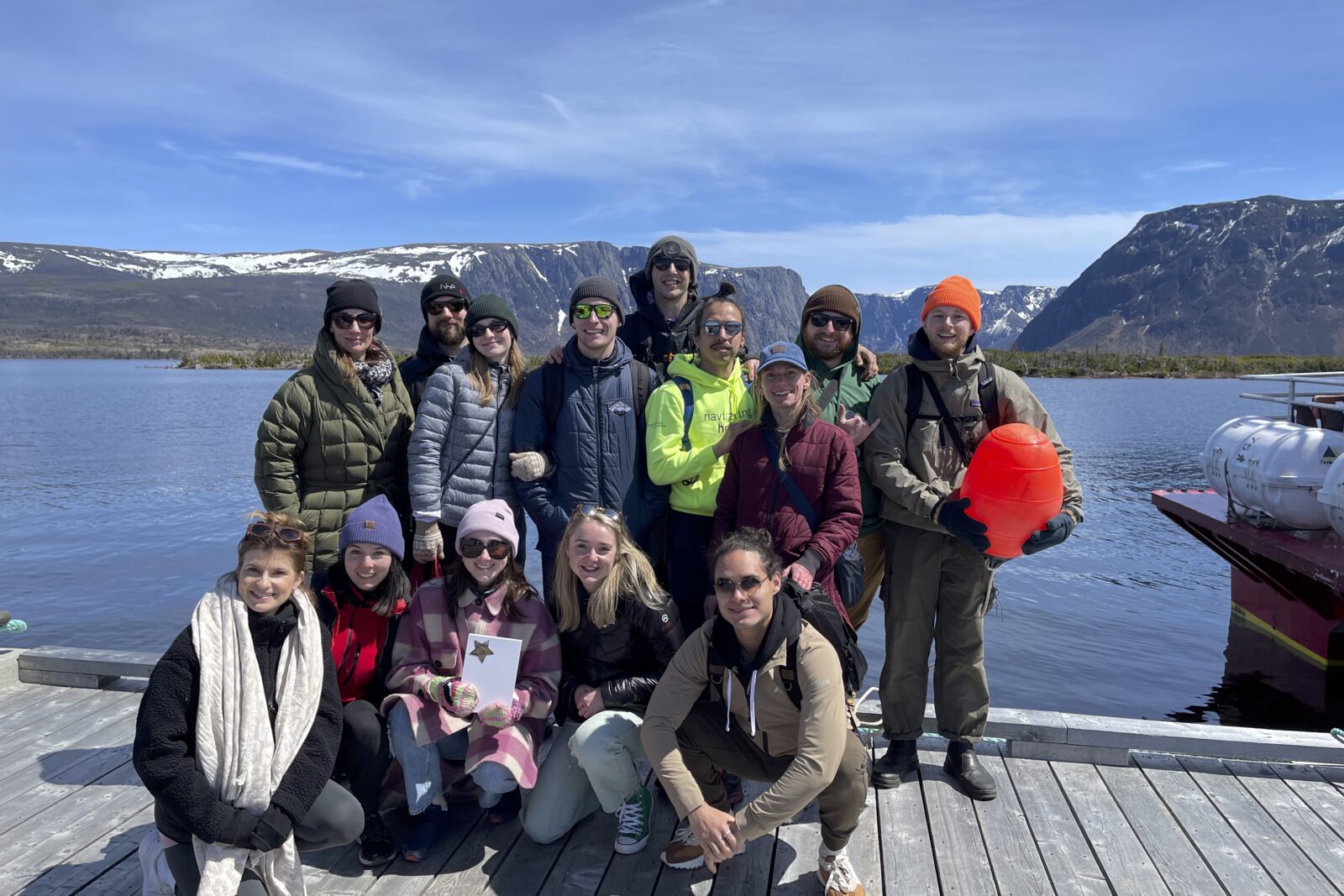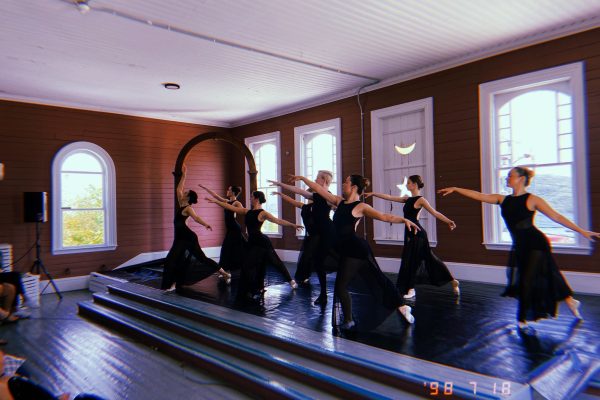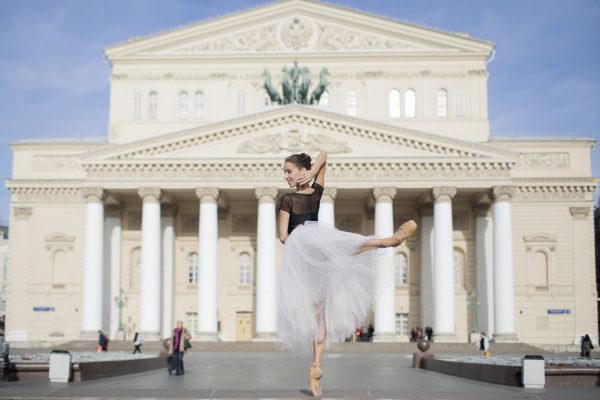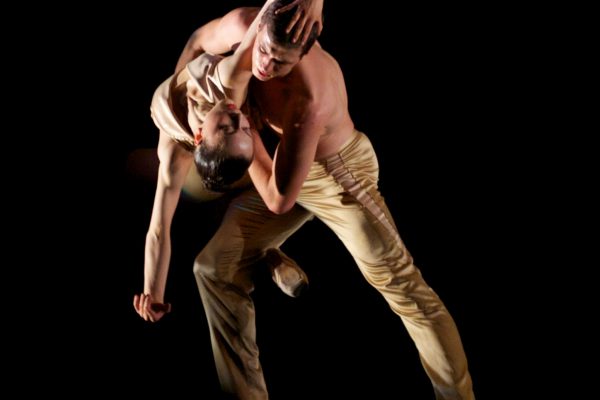National dance tours are finally coming back into full swing. With pandemic restrictions now lifted and a semblance of normalcy returning, audiences and dancers can once again come together to celebrate the joy of dance. Ballet Kelowna, a ballet company based in Kelowna, B.C., did just that with their recent tour of Atlantic Canada, which kicked off in St. John’s, N.L., on May 12.
Collaborating with local company Kittiwake Dance Theatre, Ballet Kelowna performed from May 12 to 30 in six locations across Newfoundland and Labrador with Kittiwake as their opener. This tour provided an opportunity for artists from opposite sides of the country to connect and showcase their dance communities on the East Coast.
Simone Orlando, artistic director and CEO of Ballet Kelowna, says planning for this tour began at Contact East, a performing arts booking conference in Atlantic Canada, prior to the pandemic. At the conference, Valérie Cusson, Ballet Kelowna’s agent in Eastern Canada and the United States, shared a pitch video that included their mixed program MAMBO and Other Works to Atlantic presenters. It was during this event that Cusson had the opportunity to connect with Calla Lachance, artistic director of Neighbourhood Dance Works to discuss the possibility of working together to bring Ballet Kelowna to Newfoundland.
When referencing these early conversations, Lachance says, “During COVID, funding was available to help bring artists to the province. Initially, it was meant to be a three-stop tour, including St. John’s, Gander and Corner Brook,” but it was later extended to include Grand Falls-Windsor, Stephenville and Labrador West.
In the past, Newfoundland has seen a handful of companies tour the province; however, since the pandemic began, Lachance notes that Kittiwake Dance Theatre became the sole company to continue touring to the smaller regions in the province.
When asked whether having larger dance companies like Ballet Kelowna perform in smaller communities in Newfoundland could have a positive impact, Lachance explained that her vision and the core of her work at Neighbourhood Dance Works centres around bringing artists to Newfoundland to celebrate dance. Since they identify as the only specialized dance presenter in the province, Neighbourhood Dance Works plays an important role in exposing the community to new dance works.
She strongly believes, “The more we can present dance, the more people will have the opportunity to connect with the discipline and appreciate and love it.” She emphasizes the importance of sharing a variety of works with Newfoundland communities while highlighting local artists. By collaborating with Kittiwake and touring to the province, Ballet Kelowna benefited not only the community but also its local dancers.
Hannah Drover, a soloist with Kittiwake Dance Theatre, commented on the unexpected connection the two companies share, which stems from their similar experiences of isolation from larger dance communities: “Here in our province, as an island, and in Kelowna, where it’s a smaller part of B.C., we all can feel somewhat isolated. Our dance communities are small, so it’s always such a treat to interact with dance and perform with other people.”
“It was really wonderful,” she continues, “We did warm-up class together and we got to know one another. We discovered that, of course, the dance world is small and we all know a lot of similar people.” She notes that it was a very positive and refreshing experience to connect and share experiences with other dancers from outside the province who she otherwise may not have met.
Upon finishing their tour across Newfoundland and Labrador at the end of May, Orlando has made sure to share information about touring in Newfoundland and Labrador since there haven’t been other large dance companies touring there.
“Many companies, ourselves included, perform in those larger centres and want to be on those bigger stages,” says Orlando. “But we have had the most amazing experiences when we’ve been in smaller communities, probably because we get to know people.”
Having toured to more than 70 communities in Canada, a majority of those regional, rural and remote, Ballet Kelowna has a good understanding of what is needed when performing in smaller theatres; the biggest challenge is having access to the necessary equipment and funding.
Orlando feels there needs to be more infrastructure and funding in many of these regions in order to attract more productions: “With a little bit more resources available to those theatres, you would see other dance companies coming to the province. I think it’s part of a bigger discussion around, Why aren’t bigger companies going to Newfoundland and Labrador? Or why aren’t companies going to the smaller and remote communities?”
She explains how, based on community feedback, there is a real hunger for these cultural experiences: “People want to go back to the theatre and they want to experience cultural offerings, whether it’s dance, music or theatre.”
Martin Vallee, artistic director of Kittiwake Dance Theatre, adds, “Keeping our country culturally connected through dance or any live performance-based art form requires additional funding, especially in the more isolated regions. More funding would enable Kittiwake to further establish an audience base and generate more interest within the smaller communities in Newfoundland, making these communities more appealing to other productions as a larger audience base will justify travel expenses and other costs.”
Bringing dance productions, whether local artists or out-of-province companies, to smaller communities goes beyond entertainment; it fosters a deeper cultural connection and appreciation for the art form. As Lachance points out, celebrating dance in all its forms is vital for enriching the lives of all communities. The collaboration between Ballet Kelowna and Kittiwake Dance Theatre showcases the power of such initiatives, uniting artists from different regions and providing diverse productions. By exposing more rural communities to a variety of productions, the cultural fabric of these communities is strengthened, bringing the joy and power of dance to more people.
Dance Media Group strengthens the dance sector through dialogue. Can you help us sustain national, accessible dance coverage? Your contribution supports writers, illustrators, photographers and dancers as they tell their own stories. Dance Media Group is a charitable non-profit organization publishing The Dance Current in print and online.

Tagged:






